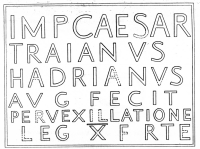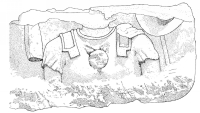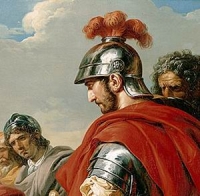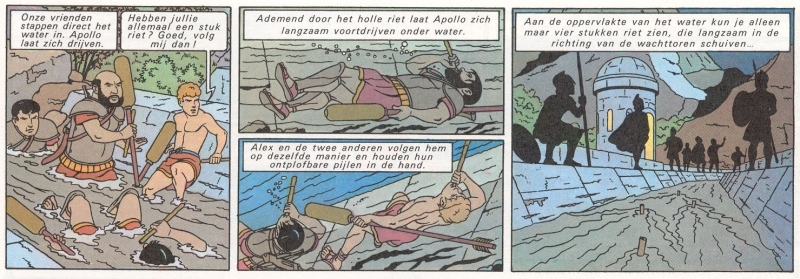



Army and Roman aqueducts
Although its exact role is still not clear, the roman army played a prominent role in the construction and repair of (some) aqueducts as is affirmed by archaeological evidence. In Caesarea Maritima (Israel) inscriptions were found stating that units of three roman legion were involved in the repair of one of the aqueducts of the city: Legio II Traiana Fortis, the VI Ferrata, and the X Fretensis. The Bouteilliere bridge is one of the many bridges in the Vallon du Reyran that supported the Fréjus aqueduct; on the upper brim of the channel a plaquette showed the bust of an army officer, probably from the XXXXth legion in Colonia XX founded in XX a.d. One can imagine that with the foundation of the military colony its status was augmented with the external supply of fresh water from a new built aqueduct.Aqua Virgo and the Trevi fountain
According to Frontinus, the Aqua Virgo aqueduct was so named because of a young girl who showed Agrippa's military engineers a hidden spring, the was surprisingly plentiful, clear and cold for being so low and near to Rome. At the Trevi fountain in Rome, nowadays fed by the successor of the Aqua Virgo, the Acqua Virgine, two reliefs witness from this legend, one depicting Agrippa giving instructions to his soldiers during construction work on the Virgo; the other desplays the maiden showing Agrippa's soldiers the hidden spring.Nonius Datus was an army engineer who was called back to Saldae (Algeria) because two working crews digging an aqueduct tunnes at opposite sides of a mountain did not met in the middle. Was he a member of a 'Roman school of army engineers' or something like that? And if so, had he some written documents at his disposal like our handbooks and summaries? Were there senior officers attached teaching new enigneers and training for their jobs all over the empire? Was there a common basis of knowledge on civil engineering? questions without answers. We only know that nothing survived as far as there were ever written documents available.
One of the big four aqueducts of Rome, the Anio Vetus with a length of 64 (Frontinus) - 81 km (Blackman 1979) was paid from the booty of the war against Pyrrhus of Epirus (around 275 b.c.).
Procopius, the historian and secretary of the general Belisarius, provides an interesting account of the role that the Aqua Virgo played when Belisarius and the Romans were besieged by Vitiges and the Goths in A.D. 537.